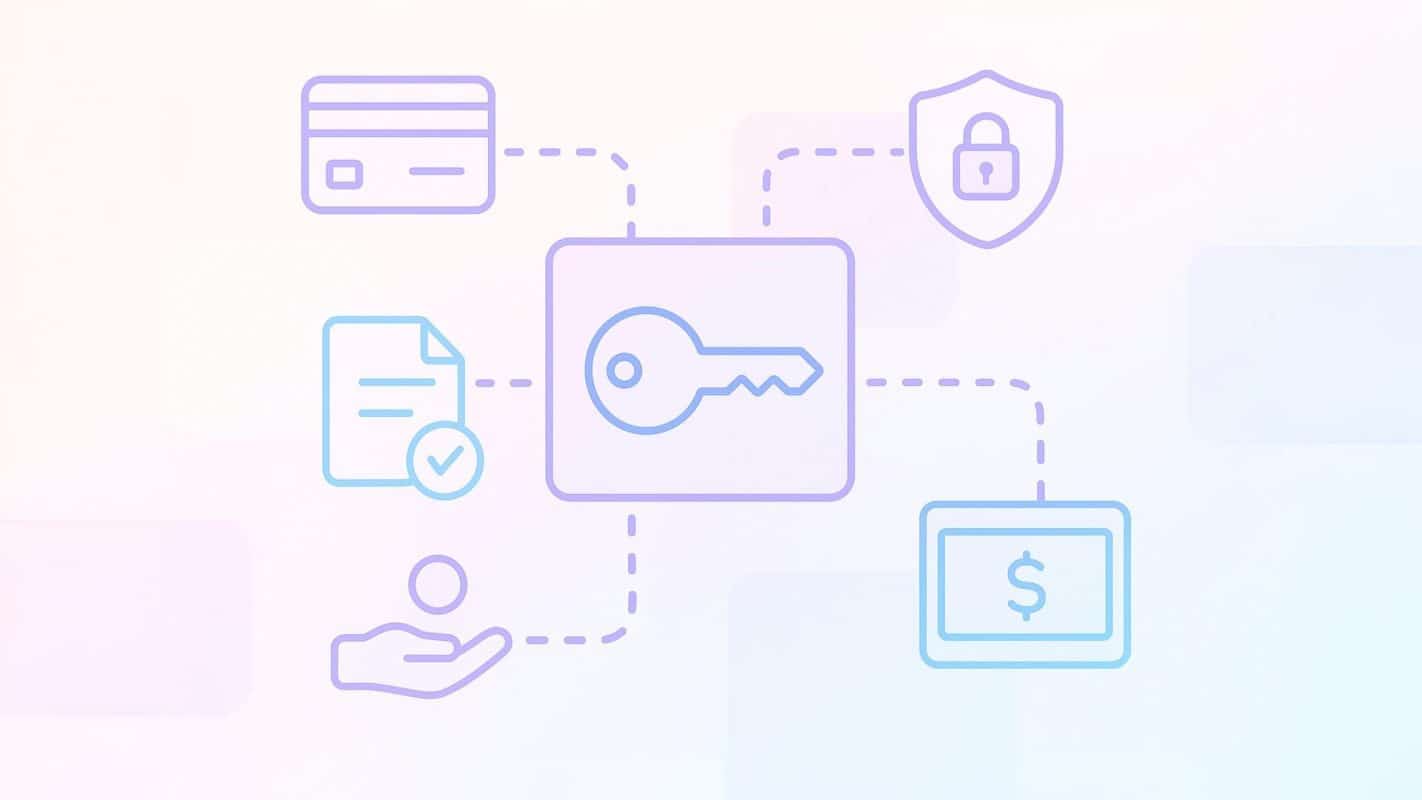SaaS 支付
什么是 SaaS 支付标记化?
发布时间: 2025年8月19日

什么是 SaaS 支付令牌化?
SaaS 支付标记化消除了敏感的支付数据,例如完整的信用卡号,并将其替换为称为标记的安全且唯一的标识符。此标记是随机生成的,在发生安全漏洞的情况下,它与原始数据没有任何含义或连接。然后使用此标记来处理付款,而不会泄露任何敏感信息,从而奠定了现代支付安全的基础。
使用标记化的主要优势是什么?
令牌化对 SaaS 平台、其客户和优先考虑安全的支付处理器有很多好处。
- 数据保障措施: 从系统中移除敏感数据可以影响数据泄露的潜在影响。如果您的系统遭到入侵,攻击者将只会获得无用的令牌,而不是信用卡号等有用数据。
- PCI DSS 合规性:支付卡行业数据安全标准 (PCI DSS) 对存储、处理或传输持卡人数据的组织有严格且昂贵的标准。Tokenization 对合规风险的影响与处理原始数据的负担减少有关,这可能会对时间、金钱和资源的使用产生影响。
- 简化操作: 令牌化可以简化循环计费和订阅管理流程。客户的付款信息会在“vault”中更新,而不会立即影响与令牌关联的有效订阅。
- 建立客户信任: 向客户保证他们的付款信息不会存储在您的服务器上,并且受到行业标准令牌化的保护,这有助于增强客户的信心和忠诚度。
令牌化在 SaaS 环境中是如何运作的?
该流程涉及您的SaaS平台、一位客户、一个安全的支付提供商(例如Stripe、Stax或其他),以及几个简单的步骤:
- 数据采集:购物者在您的网站上尝试购买时提供其信用卡详细信息。然后,这些数据会被安全地直接传输到您的支付提供商的系统,绕过您自己的服务器。
- 令牌化和存储: 支付提供商的安全令牌库会收集敏感数据。然后,它会生成一个唯一令牌,并将原始数据存储在其受数据保护且符合PCI标准的环境中。
- 令牌返回: 支付提供商将此独特的非敏感令牌发送到您的SaaS应用程序。
- 交易处理: 您的应用程序将此token与客户的记录一起存储。对于所有未来的交易——包括定期订阅费用——您的系统会将token发送给支付提供商以启动购买。您的平台将不再使用实际的卡号。
支付标记化与端到端加密 (E2EE) 有何不同?
Tokenization和E2EE都是满足不同需求的重要安全方法;它们通常一起使用以提供分层安全。
- Tokenization 使用非敏感替代品替换敏感数据,旨在将原始数据完全从您的环境中移除。
- 端到端加密 (End-to-End Encryption) 会对敏感数据进行加密,使其在没有正确解密密钥的情况下无法读取。其主要目标是在数据传输过程中保护数据。
对于 SaaS 付款,Tokenization 通常是存储重复使用支付方法的更优方式,因为它通过消除存储敏感数据的需求来减少合规负担。
对于保护数据从客户浏览器到支付提供商令牌库的初始旅程至关重要。一个强大的系统会同时使用两者。
支付标记化有哪些风险或限制?
虽然令牌化非常有效,但仍有一些注意事项:
- 提供商依赖性和锁定:特定的支付提供商会生成并绑定您的令牌。如果您切换提供商,则必须进行安全的令牌迁移过程,这很复杂,需要两个平台的合作。
- 中心故障点: 您系统的安全性在很大程度上取决于您的令牌化提供商的保管库的安全性。虽然这些保管库非常安全,但您的提供商出现中断或问题可能会扰乱您处理付款的能力。
- 它不是一个完整的安全解决方案:虽然标记化可以保护存储的支付数据,但它是更广泛安全策略的一部分,该策略必须包含其他措施,例如E2EE、地址验证系统 (AVS)、CVV 检查和AI驱动的欺诈检测,以提供全面的防御系统。
令牌如何在支付提供商之间迁移?
结论
SaaS 支付令牌化涉及用非敏感令牌替换敏感的支付信息,这可能与安全性和 PCI DSS 合规性考虑因素相关。它需要周密的计划来创建广泛的流程,但利用令牌化对于希望保护客户数据并建立安全、信誉良好的支付生态系统的 SaaS 企业来说是必要的一步,这可以保障您的业务并建立客户信任。